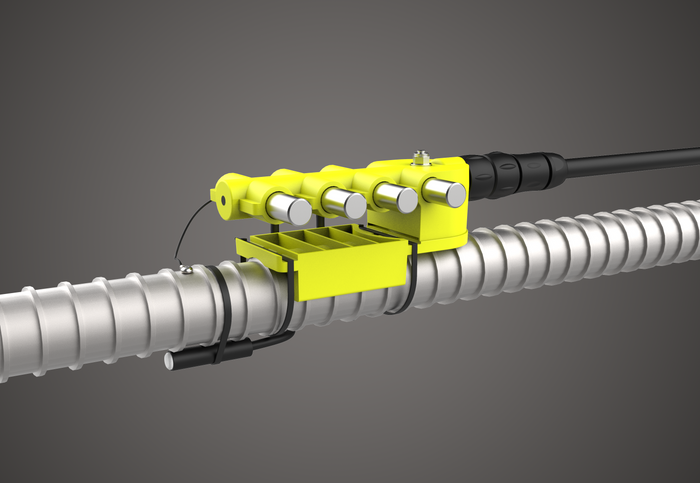
Construction.
BLCM Systems is a division of Beadlight. BLCM offers precision corrosion monitoring solutions.
Corrosion monitoring provides a method of detecting potential corrosion threats such as stray current and chemical corrosion. This is extremely beneficial for structural health monitoring systems and can help to defer or stretch inspection schedules.
Corrosion Probe.
The BLCM Corrosion Probe provides an early indication of corrosion events that may lead to a degradation of structural integrity before it becomes a threat. The probe tracks chloride penetration and carbonation before it can affect the reinforcement of the structure.
-
Monitors concrete structures for effects of chloride penetration and carbonation.
-
Compact and easy to install.
-
Very long-life design.

Features.
-
Rebar Connection.
-
4 Element ladder assembly, 16mm Ø with 28mm exposed section giving surface area of 1600 mm2 per element. Adjustable depth to suit most concrete covers from 20mm.
-
Alkaline resistant body to ensure long life.
-
Designed for use in concrete elements with up to 10m head of wet concrete during installation (e.g. columns, side walls etc) and/or constant submersion up to 30m of water.
-
8mm Ø PtTi element bar with active length of 260 mm.
Corrosion
Instrumentation Module.
BLCM's Corrosion Instrumentation offers a multitude of corrosion measurements which can be used with BLCM's Corrosion Probe or 3rd party equipment, for example standard ER probes.
The Corrosion Instrumentation offers the following network communications options running MODBUS:-
-
2 x RS485 port, to allow for Daisy chaining on an RS485 network, Maximum node count per network run of 500m shall be 40 nodes.
-
Fixed-IP network port, allowing a wired connection to a local CAT5e/CAT6 compliant network.
Measurement Techniques.
The Corrosion Instrumentation offers the most useful corrosion measurement techniques for field applications:
-
Voltage Potentials.
-
Current.
-
Noise.
-
LPR.
-
Resistivity.
-
ER.
-
Digital Temperature.





